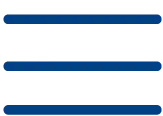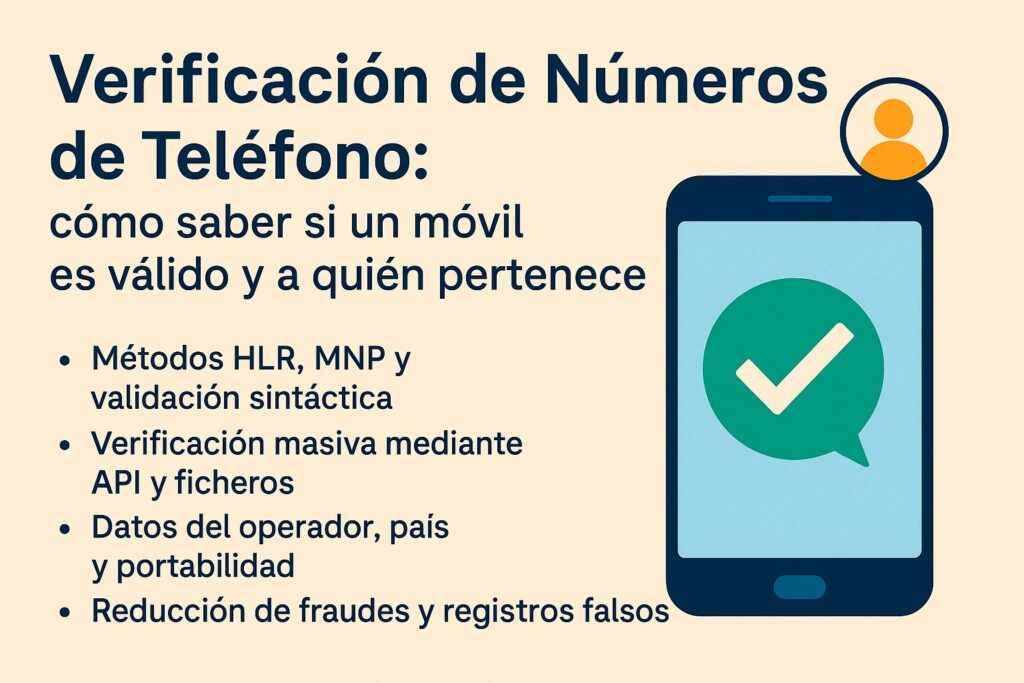Introduction
Verifyemails has been a specialist, for years, in email and email verification; and it also offers advanced phone number verification services to check if a mobile number is valid, know its carrier (and if there has been portability), country or region, and the accessibility status in real time. You can work via web interface by uploading files or integrate validation into your systems with the API to automate the entire process.
Key points you will learn
- Phone number verification: How to check if a mobile number is valid, active, and which country and carrier it belongs to.
- Validation methods (HLR, MNP, and syntactic): differences, when to use each, and how to combine them.
- API and bulk verification: Validate thousands of records with CSV/Excel or through automation.
- Fraud and false registration prevention: Improve security, reduce spam calls , and filter unknown numbers.
- Tools and costs: Fees, free options, and how to integrate with forms and CRM.
Validation methods: HLR, MNP and syntactic validation
There are several complementary approaches to phone number verification:
HLR Lookup (High Precision)
Check mobile networks to infer if the cell phone is operational and when it was last connected. Useful for sensitive campaigns, SMS bounce reduction, and segmentation. It offers indicators such as reachable (accessibility) and original/current networks.
MNP Lookup (portability)
It determines if there was portability and who the current operator is, key to optimizing messaging and routing costs per operator. Although it provides a lot of information, HLR is usually more accurate at the activity layer.
Syntactic validation
Check the combination of digits, international prefixes, and formatting (e.g., E.164). It’s great for quick filtering, although it doesn’t indicate if the number is active. In many countries, personal numbers are nine digits long.
Manual alternatives and online tools
- Call and send SMS: to check if the number is in service. You can also call back a recent number for basic verification.
- Messaging: if the contact is verified on WhatsApp or Telegram, it usually means that the number exists and is active on that smartphone.
- Third-party tools: online services (free or paid) query public databases and return phone, carrier, and geography data. An example are apps such as Truecaller or Hiya to identify calls and detect spam calls.
While these pathways help, they don’t guarantee that the number is active at all times; Mobile numbers can be unsubscribed or change ownership. With the Email Verification API, these controls are done transparently and consistently at scale.
What information you can know when verifying a number
Advanced validation can return fields such as:
| Field | Guy | Description |
|---|---|---|
| Id | String | Unique ID of the request. |
| Cost | float | Tokens or cost associated with verification. |
| phone_number / format.e164 | String | Number in E.164 format. |
| number_type | String | Type of line (fixed or mobile). |
| Timezone | String | number’s original assignment time zone. |
| is_ported | bool/null | It indicates if there was portability (it can be null). |
| reachable | String | Accessibility status at the time of consultation. |
| Imsi | string/null | SIM card identifier (if available). |
| format.international | String | Readable international format. |
| format.national | String | National format. |
| format.rfc3966 | String | Format RFC3966. |
| original_network.* | object | Country, prefix, MCC/MNC and original operator. |
| current_network.* | object | Country, prefix, MCC/MNC and current operator. |
Accessibility statuses (examples)
- connected: The number is active.
- absent: Not accessible at this time.
- no-teleservice-provisioned: does not support calls/SMS (e.g. data SIM).
- Inconclusive: The network does not provide enough signal.
- failed / no-coverage failed: error or lack of coverage.
Data availability depends on carrier and country; therefore, before a mass verification, it is advisable to carry out a sampling.
API and bulk verification with files
You can validate on a large scale by uploading well-structured TXT, CSV or Excel (one row per number) or by integrating the API to validate in real time during the registration of a user account or in batch processes. The results are delivered in JSON, ready for analytics or business decisions.
Costs and usage models
The price depends on the country and the complexity of the method (HLR, MNP, etc.). To avoid surprises, Verify Emails offers tiers and a clear rate in the pricing section. You will also find a practical article on how to validate a phone number with examples and recommendations for use.
Why verify a number in the user registry
- Identity verification: Confirms that the user has physical access to the device (SMS verification code).
- Fraud reduction: filter out bots, duplicates, and malicious sign-ups.
- Future communication: Enable notifications, support, and responsible marketing.
- Regulatory compliance: Helps meet security and privacy requirements (e.g., GDPR).
- Operator data: to know if there was portability and which is the current operator.
Who it belongs to (identification and context)
A common question is who owns the number that calls us. On
To automate, an API can connect to your switchboard or CRM and enrich records; This way you can decide whether to call back, block or prioritize. This is useful with operators such as Movistar, Claro, Entel or Bitel, and reduces advertising calls and fraud.
Usability: how to know my number and manage settings
If you’re wondering how to find my phone number or how to find my cell phone number, you can check your phone’s information on your device’s screen (device settings). On many
If you need a second phone to separate personal life and work or to channel promotions and disposable cell phone numbers , consider virtual lines. This way you can avoid unwanted calls without missing opportunities.
Remember that the length and combination of digits change by country: many use nine digits for personal numbering.
Compatibility and user experience
Validation should not hinder the UX. On iPhone and Android (any modern operating system ), it integrates background checking: first instant syntactic validation, then asynchronous HLR/MNP when the user submits the form. If the number is invalid, it provides clear information and offers to re-edit without losing data from the user file. This approach improves the high rate and keeps your base clean.
Best practices for marketing and product teams
- Evaluate whether the use case requires HLR, MNP, or both.
- Pre-process formats (E.164) when importing mobile numbers.
- Register access to the number only when the user consents and for legitimate reasons.
- Apply real-time lightweight verification and deep controls after submission.
- Centralize errors and return clear messages that help the user.
Conclusion
Implementing phone number verification provides security, data quality, and user guidance. Verifyemails allows you to verify easily from its interface or by integrating the API to automate the process. With HLR/MNP methods and syntactic validation, you can filter out false records, optimize routes by operator, and improve SMS and call deliverability. The result: less fraud, more operational efficiency, and a modern experience your users appreciate.




